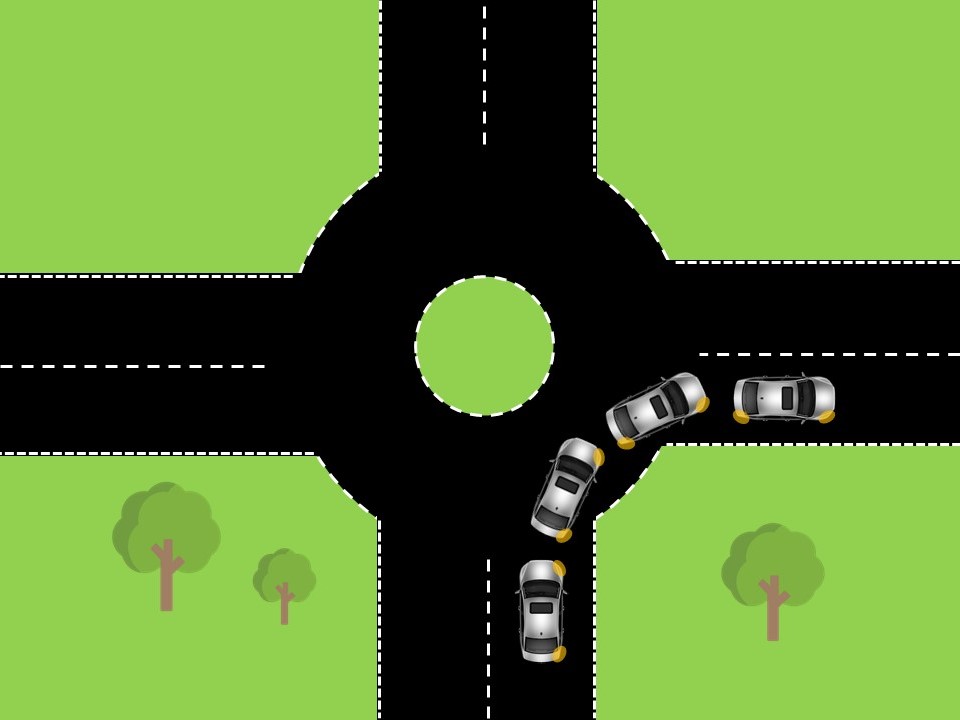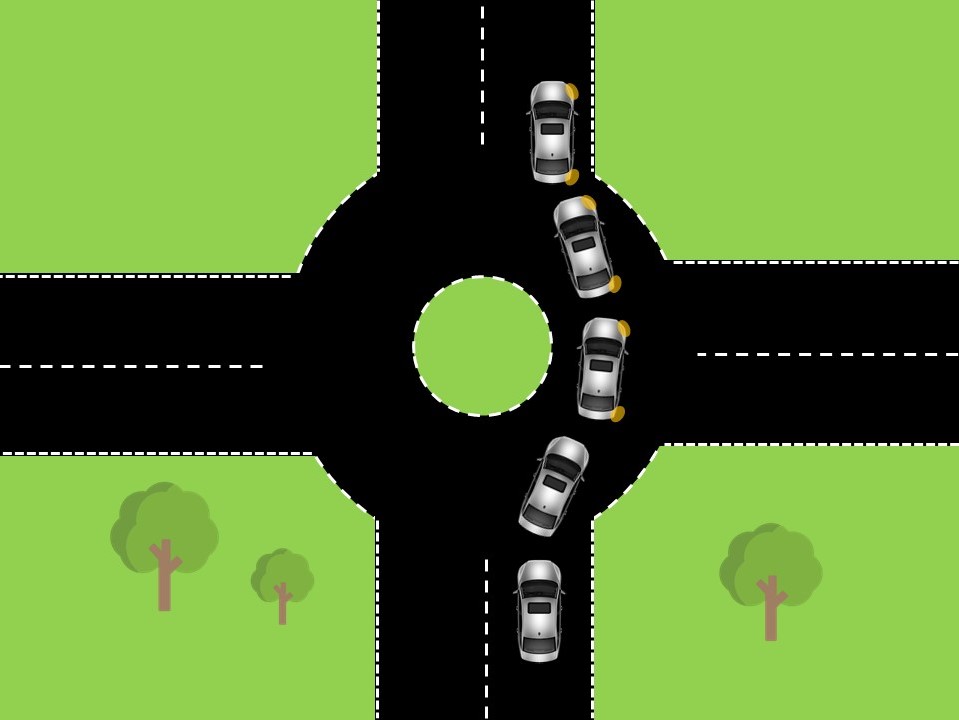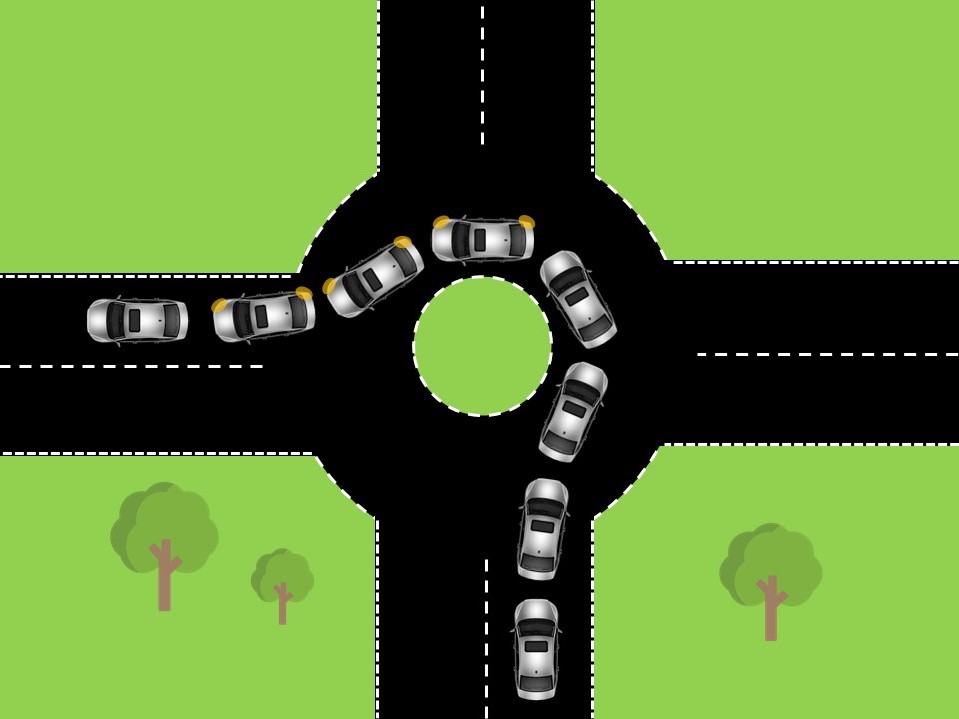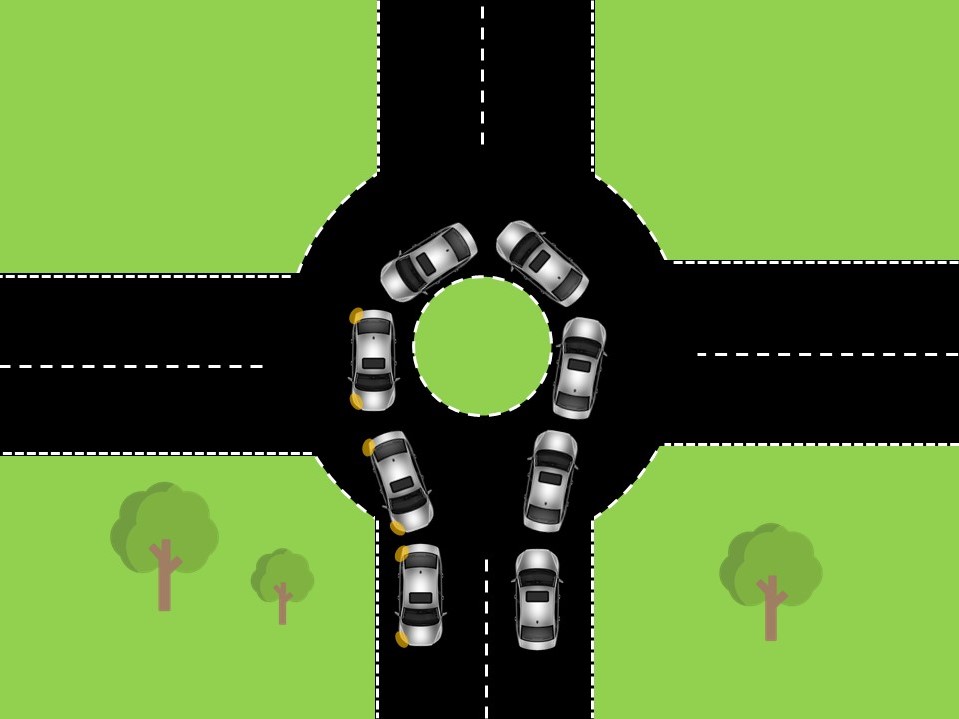Introduction
A roundabout is designed to allow traffic to flow better. It reduces the need for cars to stop and start at an intersection which is usually where cars use alot more fuel then just flowing with the traffic. Low speed of a round about also makes it a lot more safer and does not lead to any serious traffic accidents A roundabout also helps to reduce maintenance cost. Where you typically would have several traffic lights that need constant maintenance A roundabout can have 1,2 or 3 lanes. Usually the direction of travel is indicated on road with arrow markings You must give way to all traffic on the roundabout. If necessary you must stop before entering
 Roundabout with three lanes. Boards indicating the direction of travel and which lane you should use
Roundabout with three lanes. Boards indicating the direction of travel and which lane you should useRules of a roundabout
- A roundabout is indicated by the roundabout traffic sign
- Always drive counter-clockwise
- Give way to vehicles already on the roundabout
 Roundabout traffic sign
Roundabout traffic signApproaching a roundabout
- Reduce speed: Reduce your speed by gearing down. Usually gear 3 or 2 is appropriate depending on the traffic flow
- Prepare in advance: Look closely to the traffic boards and road markings. Change to the lane that you need to be in when entering the roundabout
- Indicate: There is no rule that states you need to indicate when you enter the roundabout. The only rule is you need to indicate when you exit or change lanes in a roundabout
- Plan your entry: When you approach the roundabout its good to look far ahead and adapt your speed so you can smoothly enter the roundabout
Driving in a roundabout
- Lane selection:See below diagrams. Choose the most appropriate lane. You can change lanes inside a roundabout as long as you don't cause any danger or obstruction to other traffic on the round about
- Road signs:Follow road signs and road markings
- Adapt speed: Always adapt your speed to the roundabout traffic flow. No one should brake hard or unnessesary on a roundabout
- Indicate early your exit: When you are close to the exit road indicate early so the traffic that is about to enter can see you are about to leave the round about. They will giveaway to you and adapt their speed so that you can exit the round about
Exit 1: Turning at the first exit

- Approach the roundabout
- Reduce / adapt speed to the round about
- Indicate in advance (Reason for this is that you will change a lane immediately, and you need to indicate to the driver on the opposite side of the roundabout)
- Keep to the right
- Look in your rear view, side mirror and blind spot to see that its safe to maneuver towards exit 1
- Exit the roundabout
Exit 2: Turning at the second exit

- Approach the roundabout
- Reduce / adapt speed to the round about
- Keep to the right
- Start indicating as soon as your pass the first exit. This allows the drivers on Exit 1 of the roundabout to know you are about to exit
- Look in your rear view, side mirror and blind spot to see that its safe to maneuver towards exit 2
- Exit the roundabout
Exit 3: Turning at the third exit

- Approach the roundabout
- Reduce / adapt speed to the round about
- Keep to the left of the roundabout center
- Start indicating as soon as your pass the second exit. This allows the drivers on Exit 2 of the roundabout to know you are about to exit
- Look in your rear view, side mirror and blind spot to see that its safe to maneuver towards exit 3
- Exit the roundabout
Exit 3: Large Roundabout: Turning at the third exit

- Approach the roundabout
- Choose the correct lane (See road signs or boards). Not all lanes can exit the round about where they want. Consider the following general logic
- Lane furthest to the right: Exit 1
- Middle lane: Exit 2 or 3
- Left most lane: Exit 3, 4
- Reduce / adapt speed to the round about
- Keep to the left of the roundabout center
- Start indicating as soon as your pass the second exit. This allows the drivers on Exit 2 of the roundabout to know you are about to exit
- Look in your rear view, side mirror and blind spot to see that its safe to maneuver towards exit 3
- Quickly cross over the lines of the roundabout when you pass Exit 2.
- Exit the roundabout
Exit 4: Turning at the fourth exit (U Turn)
Its always preferred to use a roundabout for a U-Turn. This is the safest way to make a U-Turn.

- Approach the roundabout
- Reduce / adapt speed to the round about
- Keep to the left of the roundabout center
- Start indicating as soon as your pass the third exit. This allows the drivers on Exit 3 of the roundabout to know you are about to exit
- Look in your rear view, side mirror and blind spot to see that its safe to maneuver towards exit 4
- Exit the roundabout
Speed of the roundabout
- Check the flow of the traffic far ahead and gear down.
- Gear 2 or 3 is most appropriate
- 20 - 30 km/h
- Dont change gears inside of the roandabout
